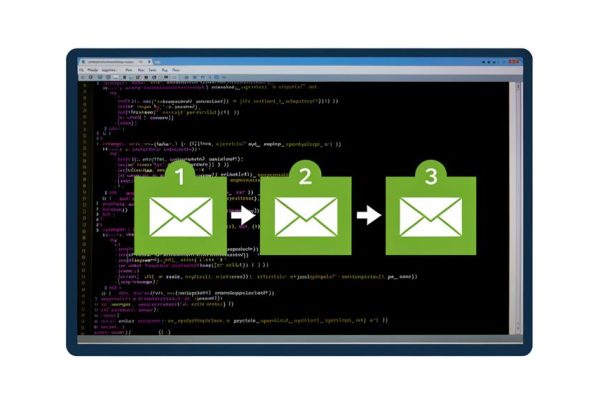As professionals navigating the intricate world of API testing, we often encounter the need to stay ahead of the curve in understanding the latest trends and best practices. In this rapidly evolving landscape, it's crucial to be well-prepared for the challenges that lie ahead, especially when it comes to interview preparations.
As we dive into the realm of API testing interview questions and answers for 2022, there are key insights and strategies that are essential for success. Whether it's understanding the nuances of authentication techniques, unraveling the advantages of API testing, or delving into the common bugs found in API testing, these 15 important questions and answers are designed to equip you with the knowledge and expertise necessary to excel in your upcoming interviews.
API Testing Overview

In API testing, we assess the functionality, behavior, security, and performance of an API to ensure its seamless integration and data exchange with other applications. Our approach is strategic and authoritative, focusing on liberating our audience with precise and concise information.
We prioritize the validation of API functionality, behavior, and security, ensuring that it meets the highest standards. By confidently addressing the challenges and advantages of API testing, we empower our audience to navigate the complexities of API testing with ease.
Through our expertise, we provide a clear understanding of the API testing procedure, authentication techniques, testing tools, and key aspects, enabling our audience to approach API testing with confidence and proficiency.
Join us in exploring the fundamental aspects of API testing, as we equip our audience with the knowledge and insights necessary for success in API testing.
Authentication Techniques
Utilizing secure authentication techniques is essential for ensuring the integrity and reliability of API testing. When it comes to API authentication, various techniques can be employed to verify the identity of users and ensure secure access to the API. Below is a table outlining common authentication techniques used in API testing:
| Authentication Technique | Description |
|---|---|
| Session/Cookies | Uses session tokens or cookies for authentication |
| Basic Authentication | Sends credentials in Base64 encoded format |
| Digest Authentication | Utilizes a challenge-response mechanism for authentication |
| OAuth | Provides delegated authorization for third-party applications |
Common API Testing Tools
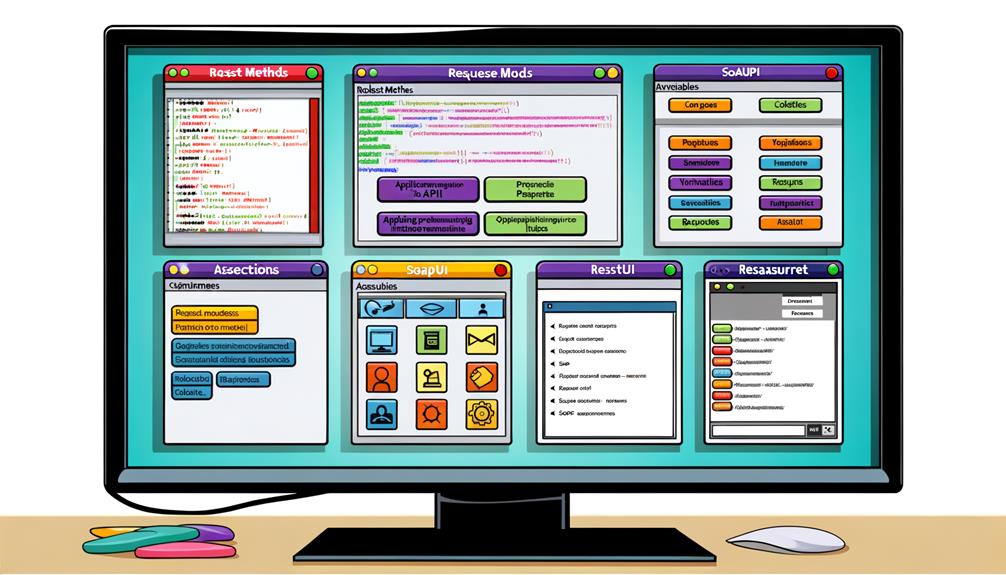
We frequently rely on a range of powerful tools for API testing to ensure the functionality, reliability, and security of our applications. Some commonly used tools for API testing include Postman, SoapUi Pro, Apigee, JMeter, and API fortress.
These tools provide a comprehensive set of features for testing the functionality, performance, and security of APIs. Postman, for example, offers a user-friendly interface for designing, testing, and documenting APIs, while JMeter is widely used for performance testing of APIs.
By leveraging these tools, we can streamline the API testing process, identify potential issues early, and ensure the seamless operation of our applications.
As technology continues to advance, it's crucial to stay updated with the latest tools and techniques to enhance our API testing capabilities.
Advantages of API Testing
Continuing our discussion on API testing tools, it is essential to emphasize the significant advantages that API testing offers in ensuring the functionality, reliability, and security of our applications.
| Advantages of API Testing | ||
|---|---|---|
| Time-efficient | Cost-effective | Language-independent |
API testing saves time, reduces costs, and does not rely on specific programming languages. This liberates us from unnecessary expenses and time constraints, allowing for more efficient and flexible testing processes. Through API testing, we can confidently ensure that our applications function seamlessly, reliably, and securely.
Challenges in API Testing

Addressing the challenges in API testing requires a comprehensive understanding of potential obstacles and strategic approaches to overcome them.
- API Chaining: Testing APIs that depend on other APIs can be complex and require meticulous planning.
- Testing Parameter Combinations: Manually testing all possible parameter combinations for an API can be time-consuming and error-prone.
- Frequent Schema Changes: Adapting to frequent changes in API schemas can disrupt testing processes and require continuous updates.
- Access to the Database: Verifying API interactions with the database can pose challenges, especially when dealing with sensitive or complex data.
API Testing Procedure
Adapting to the challenges in API testing, the API testing procedure involves:
- Selecting the test case to fulfill
- Developing a corresponding test case for API calls
Once the test case is chosen, we:
- Configure the API parameters to meet the specific requirements
- Determine the validation criteria for a successful test
We then:
- Execute the API call using programming languages such as PHP or .NET
Throughout the process, we focus on:
- Checking the accuracy of data
- Schema validation
- HTTP status codes
- Data type validations
- Authorization checks
- Other key aspects of API testing
Key Aspects of API Testing

Key aspects of API testing encompass ensuring the accuracy of data, validating schema, verifying HTTP status codes, and conducting authorization checks.
- Data Accuracy: Ensure that the data transmitted through the API is accurate and consistently maintained.
- Schema Validation: Validate the structure and format of the API response against the expected schema.
- HTTP Status Codes: Verify that the API returns the correct HTTP status codes for different scenarios.
- Authorization Checks: Conduct checks to ensure that the appropriate level of access and permissions are enforced for different users or roles.
These aspects are crucial in guaranteeing the functionality, security, and performance of APIs, thereby contributing to the overall quality of the software system.
API Testing Vs. UI Testing
API testing and UI testing serve distinct purposes in evaluating the functionality, performance, and security of software applications.
While API testing focuses on the functionality, reliability, and performance of the backend, UI testing centers on the graphical user interface and user interaction.
API testing validates the behavior of the interfaces exposed by the application, ensuring that they fulfill the expected functionality and conform to security standards, without delving into the minutiae of the user interface.
On the other hand, UI testing scrutinizes the visual aspects, ensuring that the application's interface meets design and usability requirements.
API Documentation Importance

Understanding the importance of comprehensive API documentation is crucial for effectively utilizing and integrating various software applications. API documentation plays a pivotal role in the development and integration process, as it provides clear guidance and instructions on how to interact with an API. Here's why API documentation is of utmost importance:
- Clarity and Guidance: Well-documented APIs offer clear instructions and guidelines for developers, enabling them to understand the functionalities and capabilities of the API.
- Enhanced Integration: Comprehensive documentation streamlines the integration process, reducing the time and effort required to connect different software applications.
- Developer Empowerment: Detailed documentation empowers developers by providing them with the necessary information to leverage the API's full potential.
- Reduced Errors: Accurate and comprehensive documentation minimizes the occurrence of errors during the integration and development process.
API Automation Significance
Automating API testing significantly enhances our ability to repeatedly execute and validate test cases with precision and efficiency. By leveraging automation, we can achieve comprehensive test coverage, identify bugs early in the development cycle, and accelerate the release of high-quality software products. Here is a table highlighting the significance of API automation:
| Significance of API Automation | |
|---|---|
| Ensures comprehensive test coverage | Identifies bugs early in the development cycle |
| Accelerates the release of high-quality software products | Improves overall test accuracy and reliability |
API automation is a strategic imperative for modern software development, empowering teams to deliver robust and reliable APIs while meeting the increasing demands for speed and quality.
API Documentation Templates
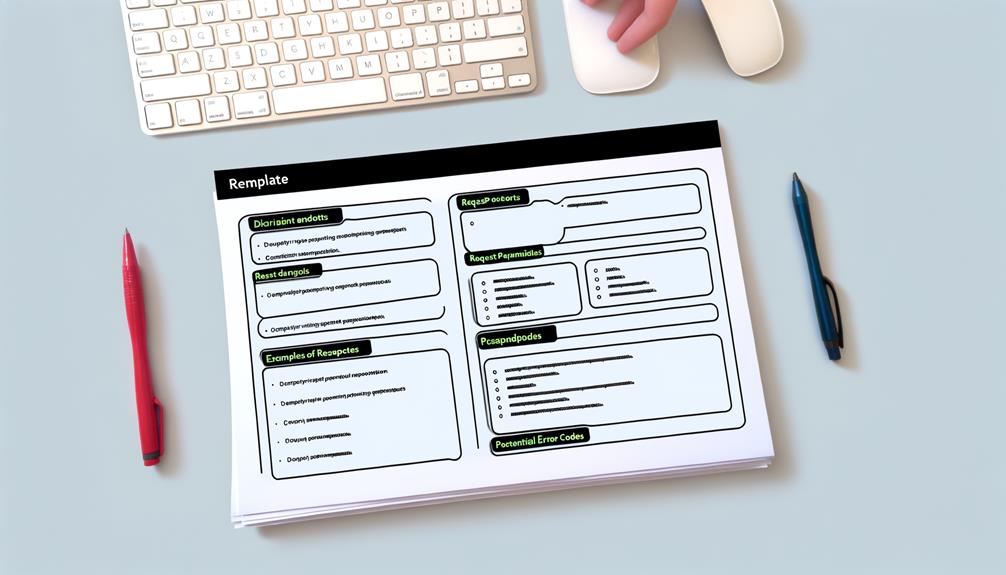
By leveraging API automation, we ensure comprehensive test coverage and early bug identification, setting the stage for our discussion on API Documentation Templates.
- Swagger: A widely used, open-source framework for designing and documenting APIs.
- RestDoc: A tool that helps in generating and maintaining API documentation.
- FlatDoc: A lightweight tool for creating beautiful, responsive, and flat documentation.
- Slate: A clean, responsive, and feature-rich documentation template for APIs.
These API documentation templates provide structured formats for documenting APIs, making it easier for developers to understand and utilize the functionalities.
Bugs Found in API Testing
The bugs found in API testing often reveal critical issues related to:
- Missing or duplicate functionality
- Error handling
- Stress
- Reliability
- Security
- Unused flags
- Performance
- Multi-threading issues
- Improper errors
These bugs can significantly impact the overall functionality and security of the system.
By identifying and addressing these bugs in API testing, we can ensure that the APIs function as intended, handle errors gracefully, and remain reliable under various conditions.
Additionally, uncovering and resolving performance-related bugs is crucial for maintaining the efficiency of the APIs.
Types of Status Codes
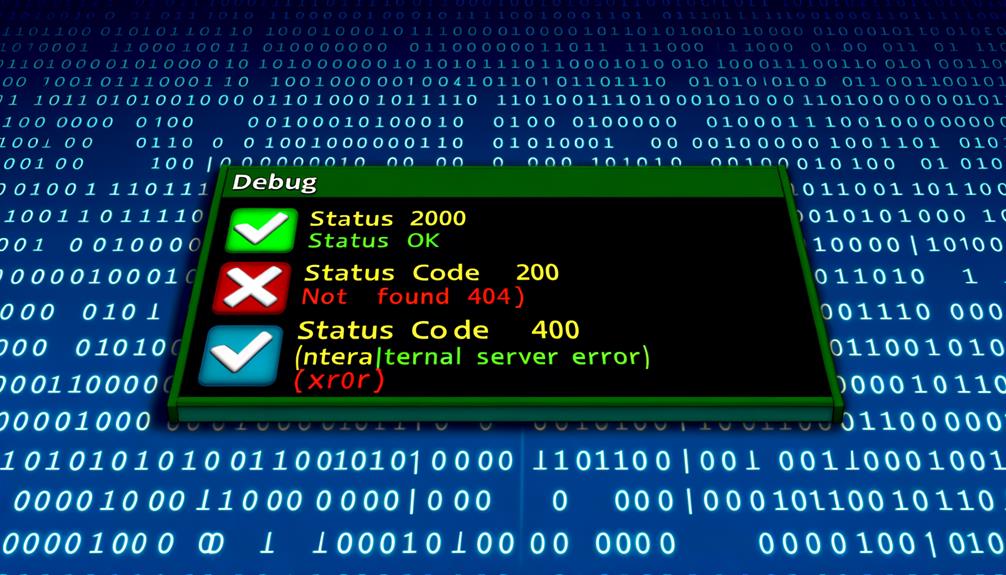
Uncovering and addressing bugs in API testing is crucial for maintaining the functionality and security of the system. A key aspect of this process is understanding the types of status codes that are encountered during testing.
- Informational Response (1xx): Provides information about the status of the request.
- Successful Response (2xx): Indicates that the request was successful.
- Redirection (3xx): Informs the client that it must take additional action to complete the request.
- Client Error (4xx) and Server Error (5xx): Signify errors on the client or server side, respectively, and indicate that the request couldn't be fulfilled.
Understanding these status codes is essential for interpreting API responses and effectively addressing issues that may arise during testing.
Common HTTP Methods
Common HTTP methods play a pivotal role in defining the actions that can be performed on a resource, facilitating efficient interaction with APIs.
The most common HTTP methods include GET, which retrieves data from a specified resource; POST, used to submit data to be processed to a specified resource;
PUT, which replaces all current representations of the target resource with the request payload; PATCH, used to apply partial modifications to a resource;
and DELETE, which removes a specified resource.
Understanding and effectively utilizing these HTTP methods are essential for comprehensive API testing, ensuring that the functionality, reliability, and security of the API are thoroughly evaluated.
API Testing Vs. Unit Testing
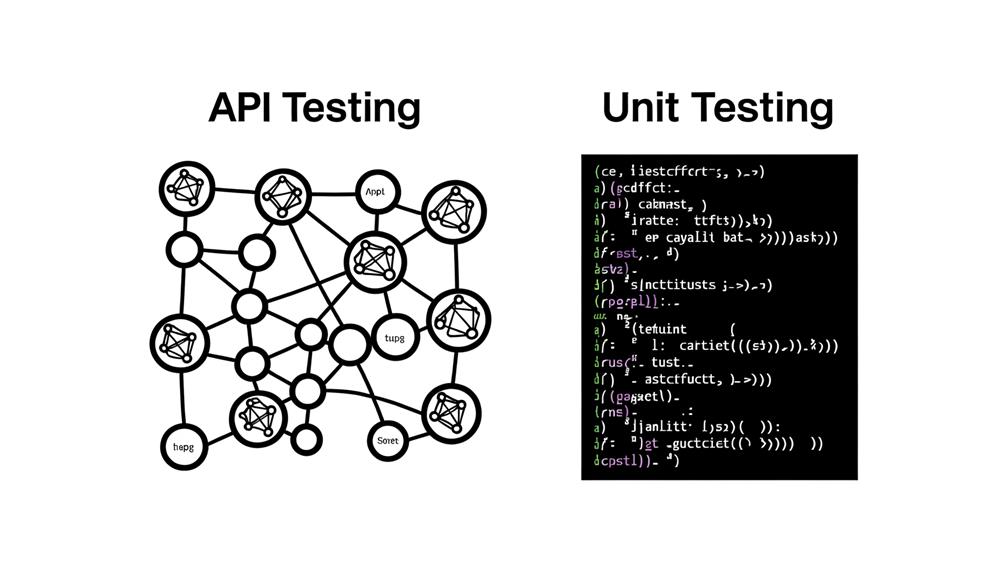
API testing and unit testing serve distinct purposes in the software development lifecycle, each contributing uniquely to the overall quality and functionality of the system.
- Focus: Unit testing primarily focuses on testing individual units or components of the software, while API testing is concerned with testing the integration and communication between different software systems or components.
- Scope: Unit testing is limited to testing the smallest parts of the code, such as functions or methods, whereas API testing involves testing the functionality, reliability, performance, and security of the entire system through its APIs.
- Approach: Unit testing is a form of white-box testing, where the internal structures or workings of the software are examined, while API testing is a form of black-box testing, focusing on the external behavior of the software.
- Dependencies: Unit testing verifies each unit in isolation, whereas API testing ensures the proper functioning of the system as a whole, including the integration of multiple units.
Frequently Asked Questions
What Are Some Common Strategies for Handling API Versioning and Backward Compatibility?
Handling API versioning and backward compatibility involves strategic planning. We ensure smooth transitions by implementing versioning through URL, custom request headers, or content negotiation.
Backward compatibility is maintained by carefully designing new features, preserving existing endpoints, and providing fallback mechanisms. This approach minimizes disruption for users and allows for gradual migrations.
We prioritize seamless integration and user satisfaction while evolving our API architecture.
How Do You Handle Testing for APIs That Rely on Third-Party Services or External Dependencies?
We handle testing for APIs relying on third-party services or external dependencies by strategically designing test environments to mimic real-world conditions.
We actively communicate with third-party providers to anticipate and mitigate potential issues. Our approach involves thorough monitoring, robust error handling, and contingency plans.
Additionally, we leverage automated tools for continuous testing, ensuring seamless integration and functionality.
This proactive strategy enables us to maintain reliability and performance despite external dependencies.
Can You Explain the Process of Mocking and Stubbing in API Testing and How It Is Beneficial?
Sure, mocking and stubbing are crucial in API testing.
By simulating responses from external services, we ensure testing continuity even when these services are unavailable. This approach helps us isolate and thoroughly test specific components, enhancing reliability and reducing dependencies.
Additionally, it enables us to assess error handling and edge cases effectively.
Ultimately, mocking and stubbing optimize testing efficiency and accuracy, leading to robust API implementations.
What Are Some Best Practices for Implementing Security Testing in API Testing?
Implementing security testing in API testing involves thorough validation of authentication, authorization, encryption, input validation, and error handling.
We prioritize security protocols like OAuth, SSL, and JWT to safeguard against potential vulnerabilities.
Regularly updating security measures, utilizing penetration testing, and adhering to industry standards like OWASP are integral.
We emphasize continuous monitoring, threat modeling, and collaborating with security experts to fortify our API infrastructure and protect sensitive data from potential breaches.
How Do You Approach Testing for APIs That Are Asynchronous or Event-Driven?
When approaching testing for asynchronous or event-driven APIs, we prioritize understanding the specific events and their associated data flow.
We create test cases that simulate these events and monitor the data flow to ensure accurate processing.
Our approach involves leveraging tools that allow for event monitoring and asynchronous response validation.
Conclusion
In conclusion, mastering the ins and outs of API testing is essential for success in the ever-evolving technological landscape of 2022.
By understanding the crucial aspects of API testing and being well-versed in the interview questions and answers, one can confidently navigate the challenges and opportunities that lie ahead.
With comprehensive insights and practical wisdom, we're well-equipped to excel in API testing and contribute to the advancement of technology in the coming year.





